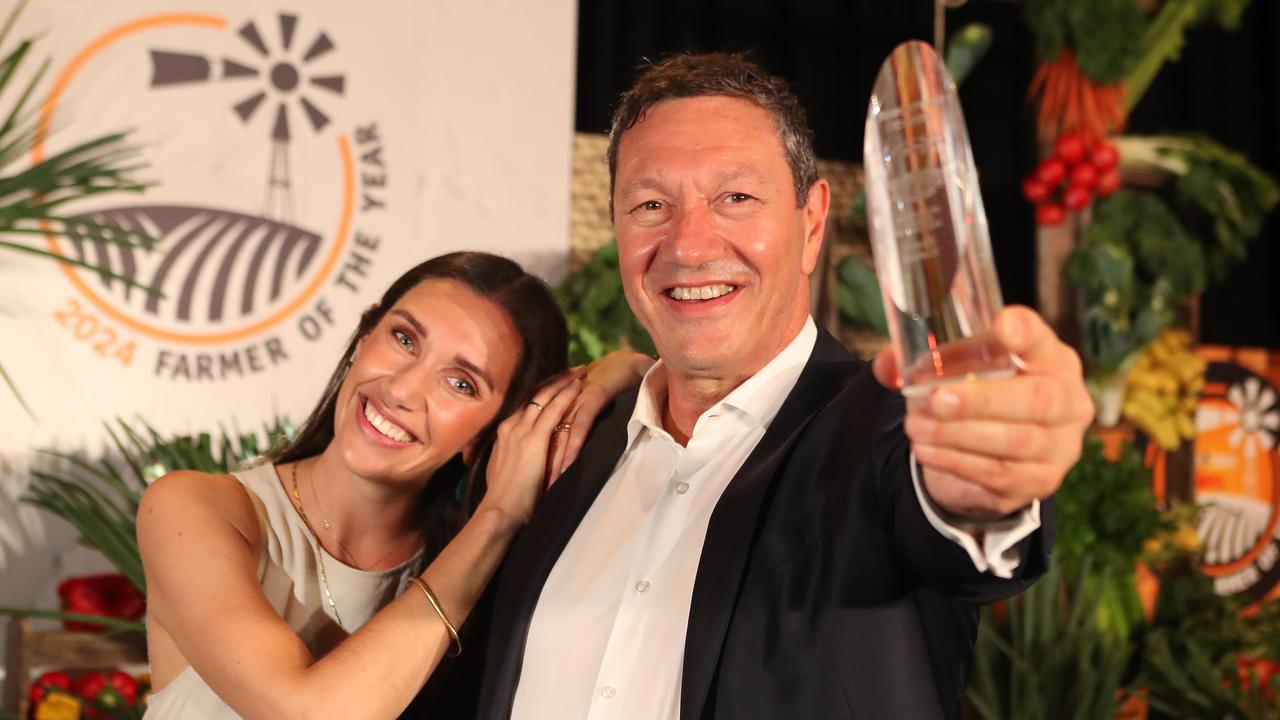Chapmans of Nyangay at Hay run a productive flock despite tight season
GEOFF and Jill Chapman could join the circus with the amount of juggling that’s been needed in the past year.

GEOFF and Jill Chapman could join the circus with the amount of juggling that’s been needed in the past year.
With just 50mm of rain in the past five months, juggling is exactly what is needed to ensure the longevity of the Nyangay flock they run on the western NSW Riverina plains south of Hay.
While they hear the messages through attending workshops such as Lifetime Ewe Management, it is as much about existence as excellence on their 8130ha station.
That’s not to say that this is a low-performing flock by any means.
Even with the seasonal challenges, the Nyangay Merino flock produced 113 per cent of lambs this year and ewes cut 6.5kg of wool despite the dry times.
They are figures that would be the envy of many a Merino producer in much better rainfall country.
FOOD FOR THOUGHT
THE way the seasons roll mean the Chapman’s management must be responsive to the feed levels, which are mainly managed by destocking or building up numbers.
“We were running more sheep because we had a couple of good years,” Geoff said. “But now we have got down to 2400 Merino ewes and 1200 ewe lambs.
“We had a big sell-off in July to September of surplus ewes and wether lambs to get back to basics.”
The high lambing percentages achieved in the Nyangay flock are one of the big plusses for the operation.
It has allowed the flock to have a relatively young average age, which copes better with the tough seasonal conditions.
This year, that means that the Nyangay core breeding flock ranges in age from 1½ years to 3½ years.
It has also encouraged the Chapmans to have a tough classing policy.
The younger hogget ewes are classed each year by Ian Lilburne, from Hay.
Geoff then goes through the older ewes each spring and continues to cull out any that are not performing.
“We have plenty of young sheep always coming up and that lets us be harder on anything that is not up to scratch,” Geoff said.
“Drought conditions forced the pressure on you to make decisions on which are the most productive sheep.”
PLAINS WANDERERS
THE Nyangay flock is currently Bluebush blood, a Poll Merino line bred by the Lilburne family, but in the past has been Caroonboon and before that, Moorundie Park.
The aim is to have a plain-bodied sheep, which is highly productive and fertile but also grows wool which delivers a good return.
But the concentration on lifting wool volumes has led to a long staple length, and the Chapmans are now reassessing whether they shear more than once a year.
“I’m not convinced that twice a year is viable but maybe three times each two years would be,” Geoff said.
“It needs to work for management, but our wool length is so good that it is something we need to consider.”
The sheep lamb in May and June to make use of what traditionally is the largest volume of feed.
“They are shorn in October and November so they go into the summer with as little wool as possible, making them easier to manage if we grow rice or have stock water issues,” Geoff said.
“It is good for the mating as the shearing seems to assist with conception rates of the ewes.”
FERTILITY FOCUS
THE Chapmans rarely scan their ewes, and with a high lambing percentage for their flock, it appears there is no need to do it.
“We ‘wet-and-dry’ at lamb marking and that’s used to assist with breeding a better sheep, but it can be dependent on the season (whether a ewe lambs or not) and the season determines whether we cull the dries or not,” he said.
“On occasions that we have preg scanned, conception rates have been good.
“We haven’t scanned for twins but it is something we would consider in the future.
“We need to be more proactive in managing ewe condition, especially if they are carrying twins.”
Right now, though, the Chapmans are trying to keep ewe condition up in the most economic way possible.
Their ewes were condition score 3.7 off shears and they hope to keep them close to conditions score three over summer.
LONG PADDOCK
THE Chapmans have their breeding flock grazing the stock routes just outside the station gates at a cost of 5c per sheep per day. But they are not convinced it has been a great option.
“It has been pretty time- consuming, other options like agistment for the young sheep will be sought if available,” Geoff said.
They also have corn in their silos waiting to be fed out, but are using the stock route option to buy them some more time before going down the on-farm feeding path.
There is no doubt the Chapmans love where they live, and the performance in the top results of the coveted Hay Peppin Shaw Merino Flock Ewe competition reflect the care and attention they pay to their sheep.
But it is also a huge challenge to keep progressing and be more efficient when the seasons keep throwing up hurdles.
In an effort to be more efficient, Geoff built the shearing shed, complete with covered yards with lights.
“It means we can go back and finish a job in the evening, or even work in the yards if it happens to be wet,” he said.
“It has made a huge difference to the way we work whether lamb marking of presenting sheep for shearing.
“Hopefully we can keep juggling as sheep and wool is still a profitable activity to be in.”


